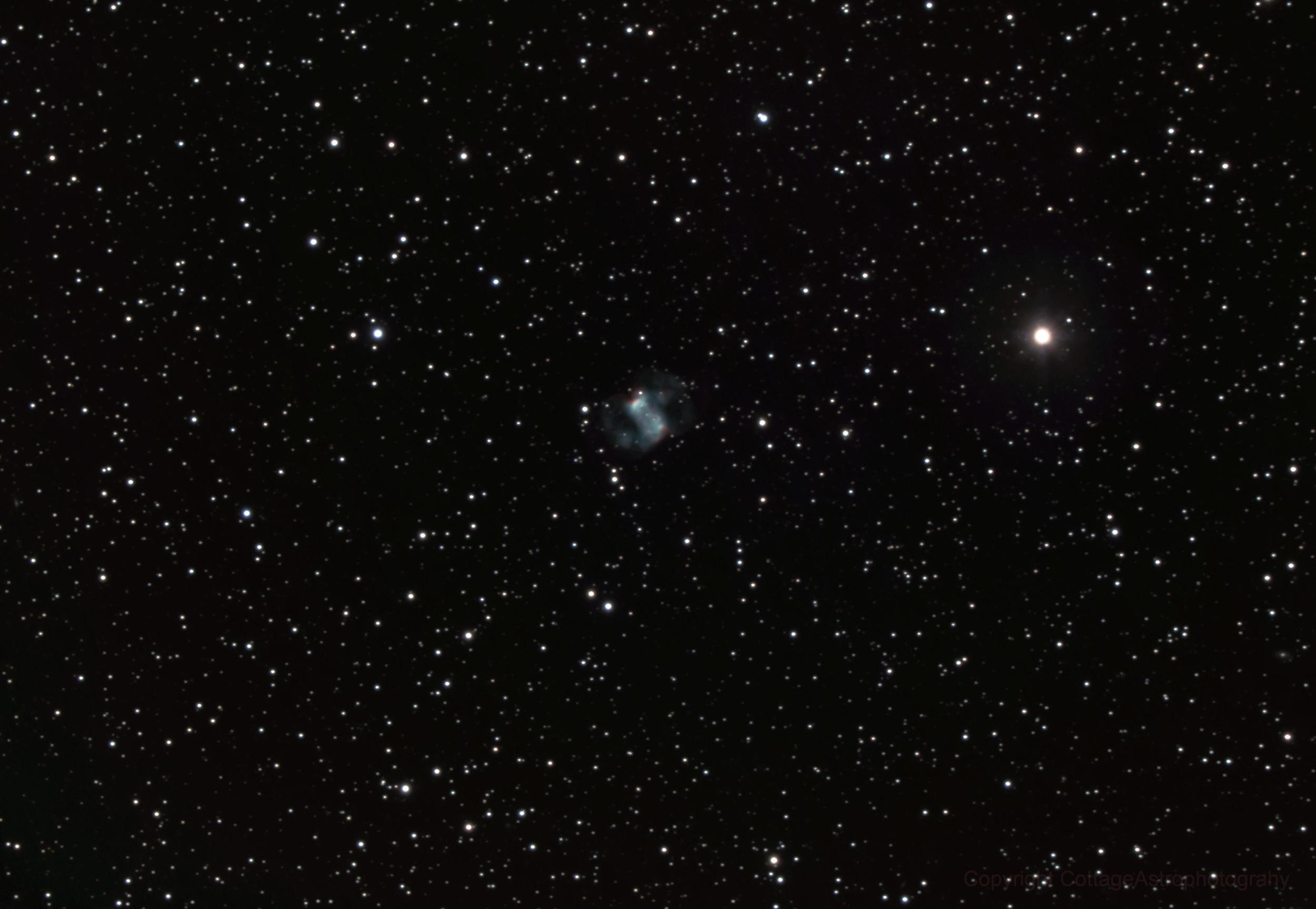About the Little Dumbbell Nebula
The Little Dumbbell Nebula, also known as Messier 76 or NGC 650/651, is a planetary nebula located in the constellation of Perseus. It is a relatively small nebula compared to other planetary nebulae, and its distinctive shape, resembling that of a dumbbell, is what has earned it its nickname. The Little Dumbbell Nebula is one of the brightest and most famous planetary nebulae in the sky and is easily visible with a small telescope.
The Little Dumbbell Nebula was discovered in 1780 by Pierre Méchain, a French astronomer, and was later cataloged by Charles Messier as Messier 76. The nebula is believed to have been created by a star that was similar in size to our sun, which has now reached the end of its life cycle and has shed its outer layers. These outer layers are now expanding into space and are being lit up by the intense ultraviolet radiation being emitted by the central star, which has now become a white dwarf.
The Little Dumbbell Nebula is located approximately 2,500 light-years from Earth and is estimated to be about 8,000 years old. It has a diameter of approximately 0.6 light-years and is considered to be one of the closest examples of a planetary nebula to Earth. The Little Dumbbell Nebula is a fascinating object for astronomers and is often studied to better understand the processes involved in the evolution of stars and the creation of planetary nebulae. Additionally, the nebula is also a popular target for amateur astronomers and is often captured in stunning images with telescopes and astrophotography equipment.
Capture Details
Imaging Telescopes: Celestron EdgeHD 9.25″
Imaging Cameras: QHY268 C
Mounts : Celestron CGX
Accessories: QHY Polemaster · Celestron .7x Focal Reducer
Software: NINA – Nighttime Imaging ‘N’ Astronomy Guiding Telescopes: Orion 50mm Guidescope
Guiding Cameras: Orion StarShoot AutoGuider
Star Map

